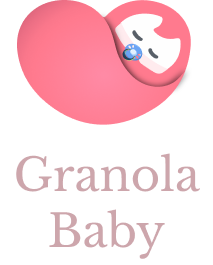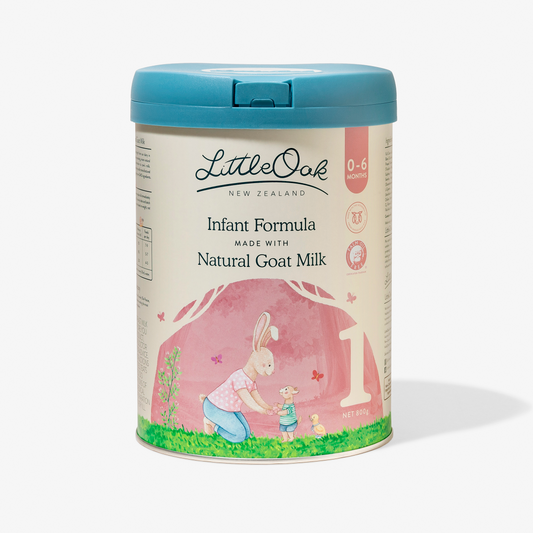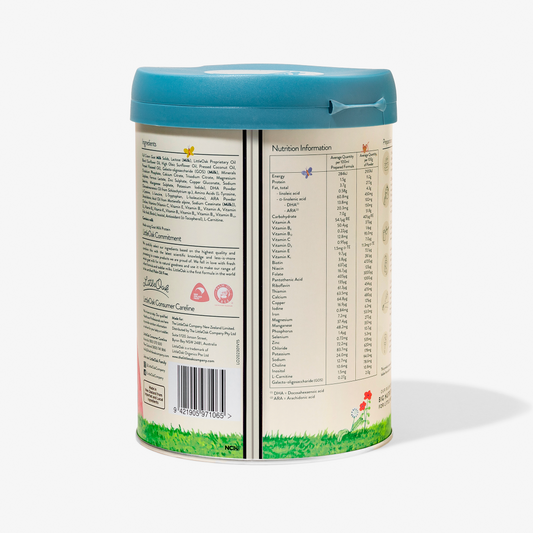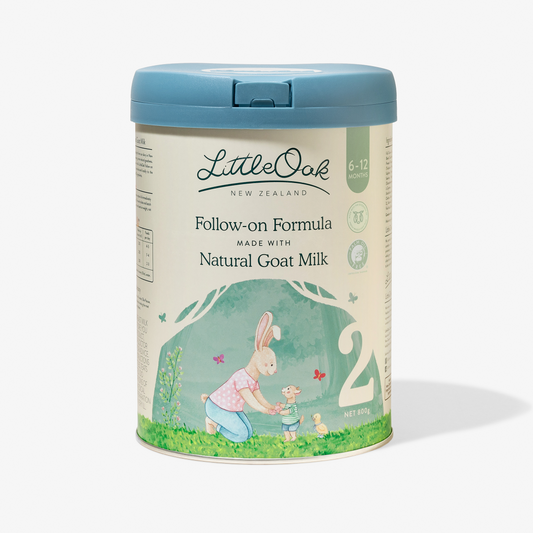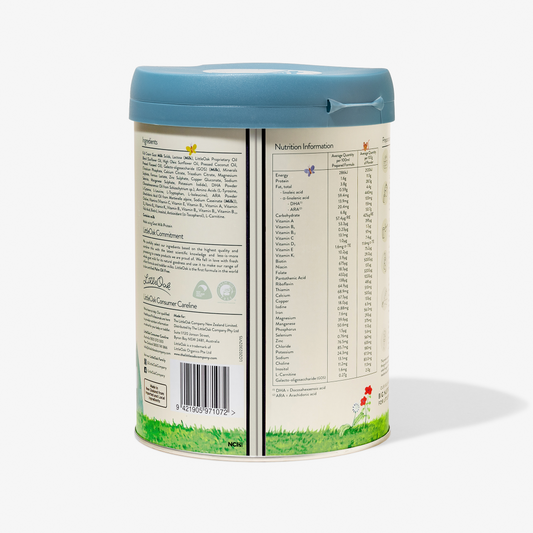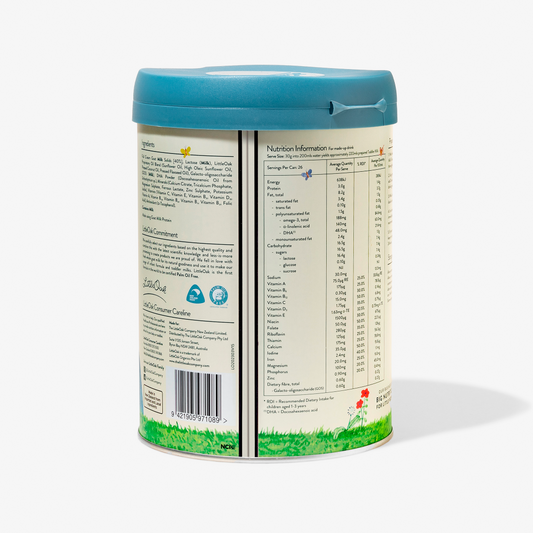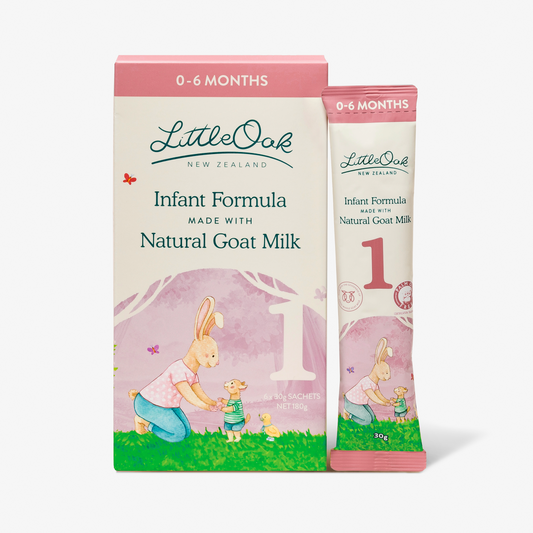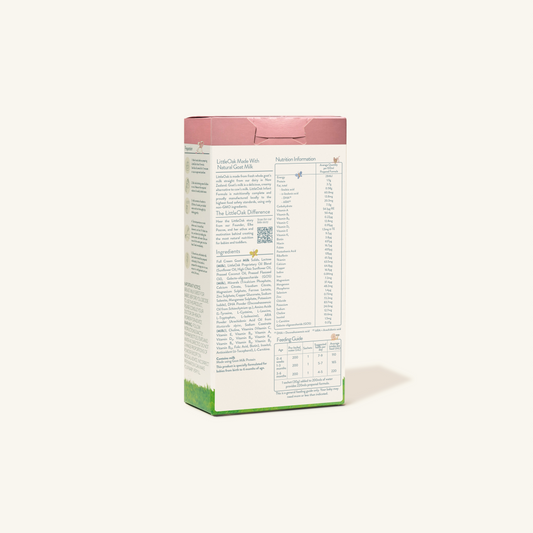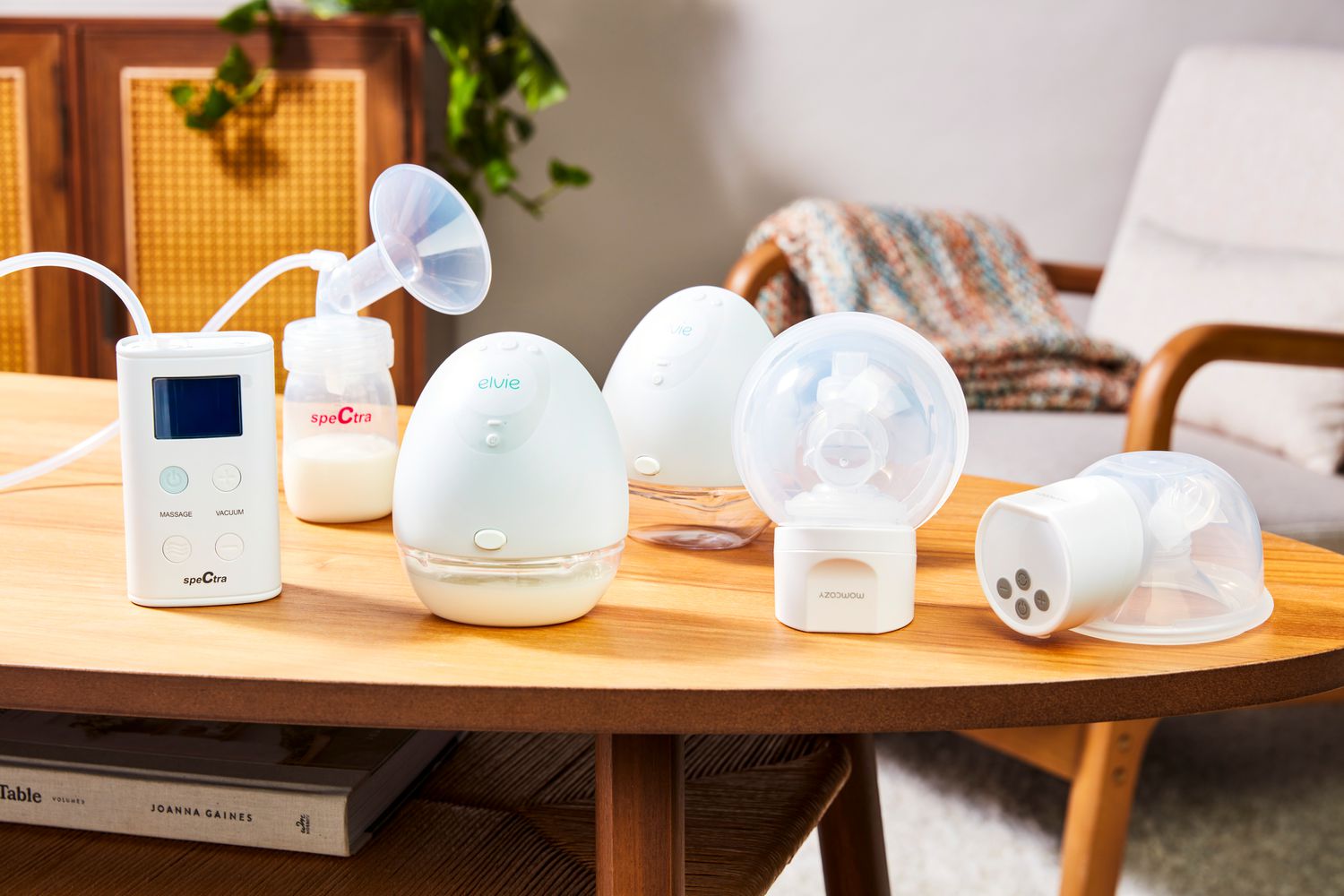
The Best Breast Pumps (If You Nurse, Pump or Do Both!)
Electric breast pumps, manual breast pumps, hands-free pumps and more. If you're overwhelmed, we can help.
Editor's note: Because of supply chain issues and recalls, formula shortages are affecting many families. For advice on switching and which formulas are currently in stock, see our article Coping With the Baby Formula Shortage? Here's How to Swap Brands.
Breastfeeding is a beautiful way to nourish your baby and create a special bond, but life happens! Whether you’re heading back to work, need a break from being the sole feeder, are dealing with low milk supply, or just prefer the convenience of pumping, a good breast pump can be a total game-changer.
At Granola Baby, we’ve rolled up our sleeves, tested all kinds of breast pumps, chatted with lactation pros, and sifted through feedback from thousands of parents to bring you our top pick: the Spectra S1 Plus Electric Breast Pump. This double electric marvel is reliable, customizable, and powerful, making your pumping sessions as efficient—and comfortable—as possible. Bonus? It runs on a rechargeable battery, so you can pump wherever life takes you (no outlets required!).
Since every parent’s needs are different, we’ve rounded up six more fantastic options, from wearable pumps for busy moms to manual ones for simplicity seekers.
Why Trust Granola Baby?
- We know baby gear, inside and out. At Granola Baby, we’ve got our ears to the ground (and our hands on the products). We chat with parents directly, hear from thousands every year through our surveys, and see what’s trending on baby registries nationwide.
- Hands-on experience, professionally and personally. As a mom of two who breastfed for four years and exclusively pumped for nearly two, I’ve tested an army of pumps—from electric to manual to wearable. I’ve plugged, unplugged, cleaned, assembled, disassembled, and everything in between, so you don’t have to!
- Expert advice. For this guide, I tapped into the wisdom of three lactation experts: Dianna Dixon, CLC, DPA, CBS and founder of Pump With Purpose; Emily Spaeth, PT, IBCLC and founder of Be Well Baby PDX; and Rebekah Kimminau, CPST, IBCLC and founder of The Baby Gear Consultant.
- Data-driven decisions. We analyze trends and feedback from our user surveys, customer reviews, and our expert merchandising team to stay ahead of the curve and ensure we recommend only the best.
With real-life insights and expert guidance, Granola Baby has you covered for all your breast pump needs. Let’s make your pumping journey as smooth (and enjoyable!) as possible.
How We Evaluated Wearable Pumps
-
Suction & Efficiency
Effectively removing milk is key, and our top picks performed the best overall.
-
Fit
A pump’s fit affects both comfort and milk output, so we prioritized pumps with adjustable options.
-
Ease of Use
Simplicity matters, especially when you’re balancing pumping with everything else.
-
Price
We kept affordability in mind, knowing that not all insurance plans cover wearables.

A Customizable, Cord-Free Powerhouse
Spectra S1 Plus
Why It’s a Winner
The standout feature of the Spectra S1 is its customization. Its digital controls let you adjust speed and suction levels, offering numerous combinations to suit your body’s needs. While there’s a slight learning curve (Spectra’s “Getting Started” guide is a lifesaver), once you dial in the settings, you’ll enjoy efficient and comfortable pumping sessions. Lactation experts agree: “The pumps that most people do well with are a little more complicated,” says Dixon. “But they set you up for success because you can find what works best for your body.”
Another game-changer is the rechargeable battery, which allows you to pump cord-free. Dixon emphasizes the importance of this feature, noting that being stuck to an outlet can make pumping feel restrictive. After exclusively pumping with a wired pump for my first baby, I can attest that the freedom of movement with the S1 makes all the difference.
Beyond portability, the quiet operation makes it a discreet choice, even in shared spaces. Add in thoughtful extras like the session timer, nightlight, and memory function that recalls your last settings, and you’ve got a pump designed with moms in mind.
Pros
- Multiple settings for fully customizable suction and speed
- Rechargeable battery for wireless pumping (up to 3 hours of use)
- Quiet operation, comparable to the hush of a library
- Thoughtful extras: session timer, nightlight, and memory function for your settings
Cons
- Bulky and heavier than some competitors
- Requires a bit of trial and error to find the best settings
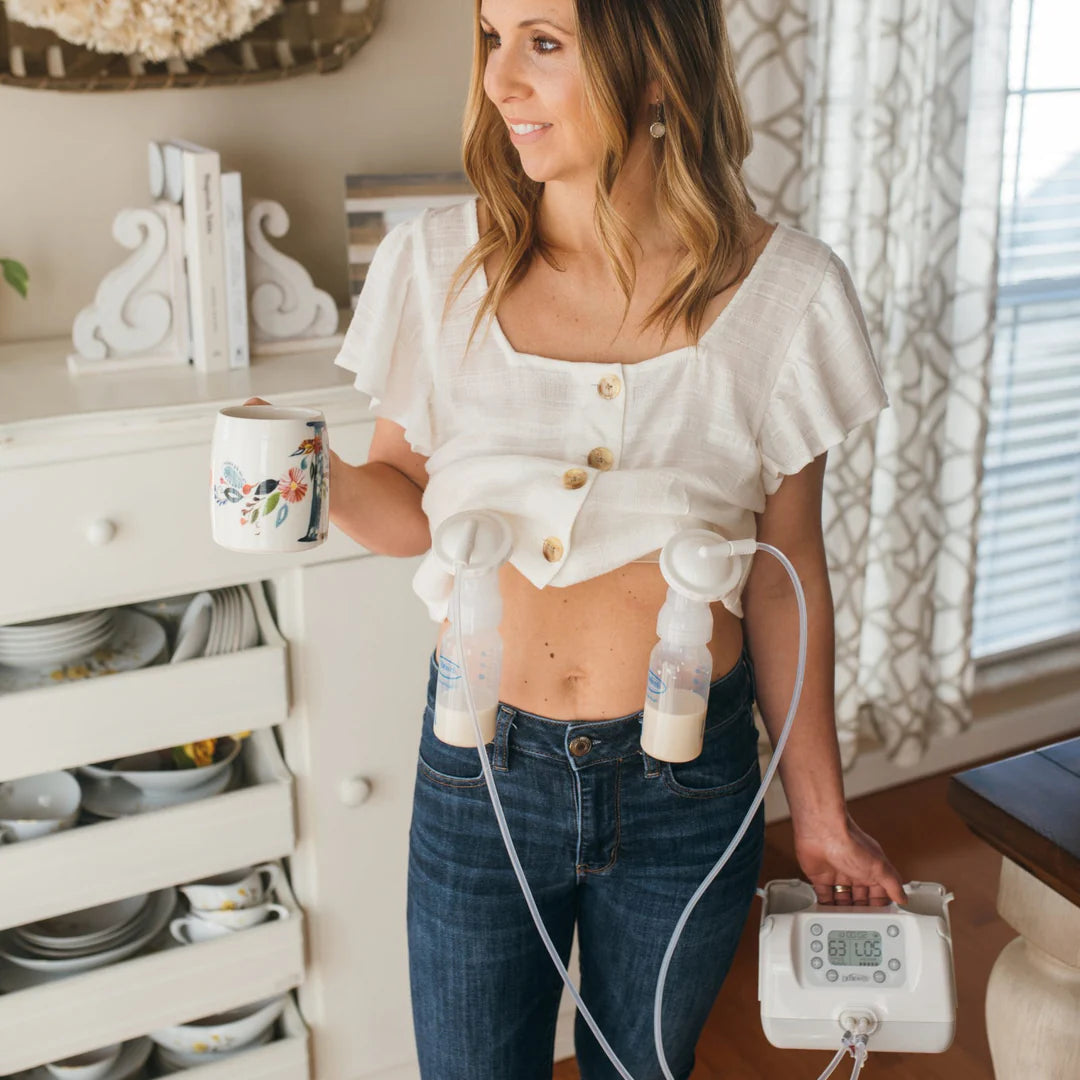
A Budget-Friendly Option for Pumping Parents
Dr. Brown’s Customflow
Why It’s a Solid Choice
The Dr. Brown’s Customflow is an affordable option that doesn’t skimp on useful features. Its let-down and expression modes offer customizable settings, letting you tailor your pumping sessions to your comfort and efficiency needs. The memory function is a thoughtful touch, remembering your favorite settings to save you time and effort during repeat sessions.
A highlight of the Customflow is its soft silicone flanges, which many pumpers find more comfortable than traditional plastic ones. (While personal preference plays a big role—some moms, myself included, prefer plastic—silicone often gets rave reviews for its gentle feel.)
Another bonus? You can pump directly into Dr. Brown’s bottles, a brand that’s a favorite among many Granola Baby parents. This eliminates the need for milk transfers, simplifying cleanup and reducing the chance of spills.
Pros
- Budget-friendly price point
- Soft silicone flanges for added comfort
- Compatible with Dr. Brown’s bottles, allowing for direct pumping
- Memory setting saves your preferred settings
Cons
- Louder than many other pumps
- Less powerful motor compared to premium models
- Must remain plugged in—no rechargeable battery

A Convenient Wearable Pump for On-the-Go Moms
Willow Go
Why It’s a Game-Changer
Wearable pumps are designed to simplify life for pumping parents, and the Willow Go delivers on that promise. It’s a fully portable solution that eliminates the need for cords, tubing, or separate milk collection bottles. Everything—motor included—fits discreetly into your bra, allowing you to pump while attending a work event, flying on a plane, or simply multitasking at home.
The stimulation and expression modes paired with nine suction levels make it easy to customize your experience for both comfort and efficiency. While wearable pumps like the Willow Go typically yield lower milk output than traditional pumps, they’re invaluable when you need to pump discreetly or on the move.
One standout feature is its reusable storage containers, which hold up to five ounces (or seven ounces with an upgrade). This eco-friendly choice eliminates the need for disposable bags, though it does mean an extra step for cleaning. On a full charge, the pump lasts about five sessions, making it a reliable option for a busy day.
Pros
- Fully hands-free and wireless for ultimate portability
- More affordable than similar wearable pumps
- Discreet under clothing (not too bulky)
- Reusable storage containers reduce waste
Cons
- Limited mobility: milk can spill if you lean over too far (45° max)
- Lower output compared to traditional double electric pumps
- App lacks advanced features like milk output tracking
- Can be challenging for larger-breasted individuals to get a good fit
The Granola Baby Guide to Breast Pumps: Types, Tips, and Choosing the Best One
Types of Breast Pumps
Breast pumps come in all shapes and sizes, each with its own perks. Here’s a quick rundown of the four main types:
- Electric Breast Pumps
Plug them in or use a rechargeable battery—electric breast pumps are the workhorses of the pumping world. They’re efficient, adjustable, and perfect for frequent pumping. Most parents opt for double pumps for extra efficiency. And while you might hear the term “hospital-grade” tossed around, just know it’s not an FDA-regulated label but rather a nod to high standards like strong suction and easy sterilization. - Wearable Breast Pumps
Want to pump while chasing a toddler or taking a Zoom call? Wearable breast pumps, aka hands-free pumps, tuck right into your bra with no wires, tubes, or external parts. They’re discreet and portable, though not always as effective as traditional pumps for regular use. - Portable Breast Pumps
Think of these as the middle ground between traditional and wearable pumps. Portable pumps are compact and lightweight, often weighing just a few ounces. They still use tubing but are easier to carry and perfect for moms on the go. - Manual Breast Pumps
No motor, no noise—just you and a hand-operated pump. These are great for travel or occasional use. They’re compact, budget-friendly, and quiet, but they require a little more elbow grease.
How to Choose the Best Breast Pump
Picking the right pump depends on your lifestyle, preferences, and goals. Here are the key factors to consider:
- Frequency of Use
Exclusive pumper? Go electric. Pumping just occasionally? A manual or wearable pump might do the trick. - Size and Portability
Will you mostly pump at home, or do you need something portable for work or travel? Also, decide if being tied to a power source is a dealbreaker. - Suction Settings
Since every body responds differently, look for a pump with adjustable suction levels to ensure comfort and efficiency. - Fit Matters
The right flange size can make or break your pumping experience. Measure carefully and experiment with sizes for the best results. - Ease of Use
Consider how easy the pump is to clean, assemble, and maintain. Don’t forget to check customer reviews and warranty options, too.
How to Get a Breast Pump Through Insurance
Thanks to the Affordable Care Act (ACA), most health insurance plans cover the cost of a breast pump. Reach out to your provider for details on what’s covered, or use Granola Baby’s Pump Navigator to simplify the process. Just input your state and insurance details, and we’ll match you with covered pumps, handle the paperwork, and even ship your pump to your door.
Understanding Breast Pump Terminology
- Closed vs. Open System: Closed systems have a barrier to keep milk out of the motor, reducing contamination risks. Most experts recommend them.
- Stimulation vs. Expression Phase: Pumps mimic the way babies nurse, starting with quick, light suction to stimulate milk flow and then transitioning to stronger, slower suction to express milk.
- Suction Settings: Look for a pump with a wide range of suction levels. Optimal suction is effective but still comfortable.
- Pump Accessories: From milk bags to flanges, make sure you have the right gear for your pump and your body.
In conclusion...
Granola Baby's Tip: The best pump is the one that fits your lifestyle and feels comfortable for you. Let Granola Baby help you navigate the world of breast pumps with confidence!
Our Featured Baby Formula
Made from fresh whole goat milk, our beautiful baby formulas and toddler milk support gentle digestion for little tummies - with less processing and more natural goodness. Goat milk is a rich source of nutrients with naturally occurring A2 casein, oligosaccharides and prebiotics.
-
LittleOak Stage 1 Natural Goat Milk Infant Formula (0-6 months)
Vendor:LittleOakRegular price $52.95Regular priceUnit price / per -
LittleOak Stage 2 Natural Goat Milk Follow-on Formula (6-12 months)
Vendor:LittleOakRegular price $52.95Regular priceUnit price / per -
LittleOak Stage 3 Natural Goat Milk Toddler Drink (12+ months)
Vendor:LittleOakRegular price $52.95Regular priceUnit price / per -
LittleOak Stage 1 Natural Goat Milk Infant Formula Sachet (0-6 months)
Vendor:LittleOakRegular price $19.95Regular priceUnit price / per
